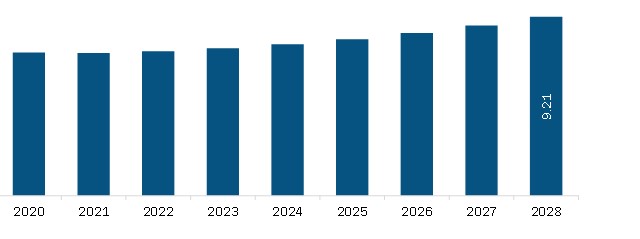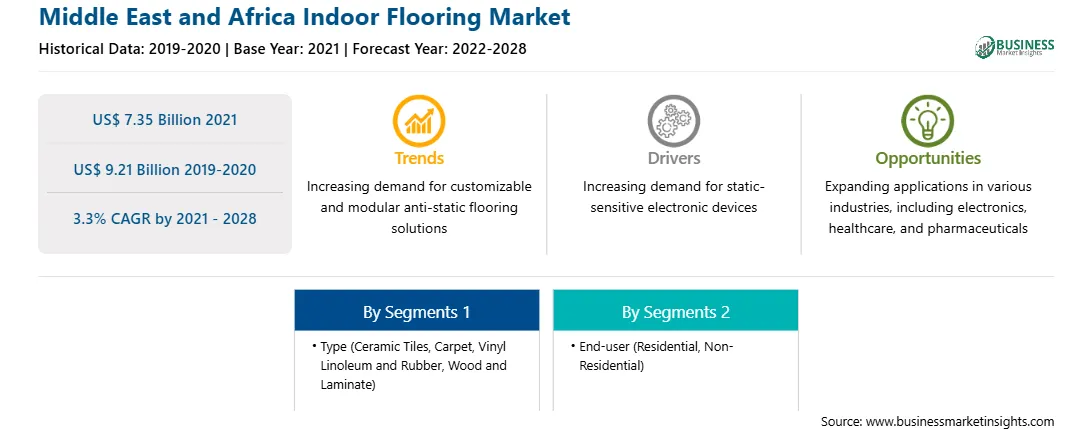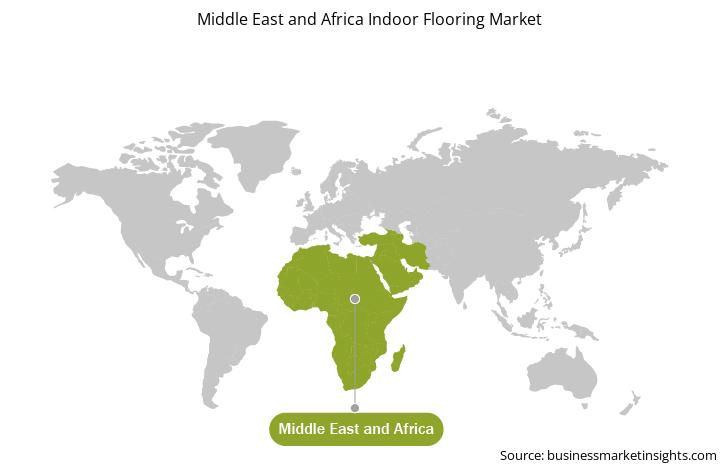Home renovation and remodeling activities are increasing in many countries, which can be mainly attributed to growing governments support for the same, especially in the developed countries. The willingness to spend substantial amounts on the styling of living spaces has attracted the focus of consumers toward home furnishings such as carpets and rugs that enhance the aesthetic appeal of interiors. This shift is supported by the rise in consumer income levels, changes in lifestyles, and adoption of different cultures in terms of interior decor. Floor coatings such as ceramic tiles, carpets, vinyl, linoleum and rubber, wood, and laminate are applied on surfaces to impart slip resistance properties to them. Besides offering slip resistance, they also confer anti-vibration, antistatic, and waterproof properties. Coatings such as epoxy coatings increase the durability of concrete floors. Epoxy, polyurethane, and acrylic coating on concrete floors make them capable of withstanding a considerable amount of static and dynamic loads. Floor coatings also prevent wear and tear on the surface of these floors. As floor coatings are resistant to cleansers, oils, chlorides, water, snow, ice, hail, transmission fluids, and bleaches, they are increasingly being used to overlay the floors of parking spaces, garages, and cars showrooms. Moreover, they are used to enhance the aesthetics of floors in houses. Metallic pigments are added to the indoor flooring materials to create a metallic swirl effect. Further, there is a growing trend of adding vinyl color flakes and metallic pigments to add a rich color layer and texture to the floor surface. Thus, the above-mentioned factor is likely to boost the growth of market.
Among the MEA countries, Turkey, Iran, and South Africa have faced the highest number of COVID-19 cases. Other major countries facing the economic impact of COVID-19 include Iraq, Israel, Morocco, Saudi Arabia, and UAE. The region comprises many growing economies such as UAE and Saudi Arabia, which are prospective markets for Indoor Flooring providers due to the huge presence of a residential, commercial, and industrial sector. The global COVID-19 pandemic would have significant effects on global economies, but the region has negatively impacted as there is already pressure on the economy of various oil-based countries due to falling oil prices. In addition to this, the factory lockdowns, business shutdowns, are further aggravating the economic problems of the countries in the region. Measures to suppress the Covid-19 pandemic, including self-isolating, hand washing, and lockdowns assume that communities, societies, and residential pipelines have sustainable access to acceptable amounts of adequate quality water. Nevertheless, across developing countries the good interiors demand is decreasing, along with the commercial’s properties due to lockdowns. Hence, the estimated decline in MEA’s economic condition and impact of COVID-19 on the growth of various industries in the region is expected to negatively impact the growth of the market till mid-2021. Saudi Arabia's construction sector has dropped to -1.9 percent from -2.8 percent, with a 3.3 percent rebound forecast in 2021. This revision reflects improving economic efficiency, the cessation of a national curfew at the end of September, the easing of controls on companies following three months of tight curbs, and a substantial decrease in infection incidence.
With the new features and technologies, vendors can attract new customers and expand their footprints in emerging markets. This factor is likely to drive the Middle East and Africa indoor flooring market. The Middle East and Africa indoor flooring market is expected to grow at a good CAGR during the forecast period.
Strategic insights for the Middle East and Africa Indoor Flooring provides data-driven analysis of the industry landscape, including current trends, key players, and regional nuances. These insights offer actionable recommendations, enabling readers to differentiate themselves from competitors by identifying untapped segments or developing unique value propositions. Leveraging data analytics, these insights help industry players anticipate the market shifts, whether investors, manufacturers, or other stakeholders. A future-oriented perspective is essential, helping stakeholders anticipate market shifts and position themselves for long-term success in this dynamic region. Ultimately, effective strategic insights empower readers to make informed decisions that drive profitability and achieve their business objectives within the market. The geographic scope of the Middle East and Africa Indoor Flooring refers to the specific areas in which a business operates and competes. Understanding local distinctions, such as diverse consumer preferences (e.g., demand for specific plug types or battery backup durations), varying economic conditions, and regulatory environments, is crucial for tailoring strategies to specific markets. Businesses can expand their reach by identifying underserved areas or adapting their offerings to meet local demands. A clear market focus allows for more effective resource allocation, targeted marketing campaigns, and better positioning against local competitors, ultimately driving growth in those targeted areas.
Middle East and Africa Indoor Flooring Strategic Insights

Middle East and Africa Indoor Flooring Report Scope
Report Attribute
Details
Market size in 2021
US$ 7.35 Billion
Market Size by 2028
US$ 9.21 Billion
Global CAGR (2021 - 2028)
3.3%
Historical Data
2019-2020
Forecast period
2022-2028
Segments Covered
By Type
By End-user
Regions and Countries Covered
Middle East and Africa
Market leaders and key company profiles
Middle East and Africa Indoor Flooring Regional Insights

The Middle East and Africa Indoor Flooring Market is valued at US$ 7.35 Billion in 2021, it is projected to reach US$ 9.21 Billion by 2028.
As per our report Middle East and Africa Indoor Flooring Market, the market size is valued at US$ 7.35 Billion in 2021, projecting it to reach US$ 9.21 Billion by 2028. This translates to a CAGR of approximately 3.3% during the forecast period.
The Middle East and Africa Indoor Flooring Market report typically cover these key segments-
The historic period, base year, and forecast period can vary slightly depending on the specific market research report. However, for the Middle East and Africa Indoor Flooring Market report:
The Middle East and Africa Indoor Flooring Market is populated by several key players, each contributing to its growth and innovation. Some of the major players include:
The Middle East and Africa Indoor Flooring Market report is valuable for diverse stakeholders, including:
Essentially, anyone involved in or considering involvement in the Middle East and Africa Indoor Flooring Market value chain can benefit from the information contained in a comprehensive market report.